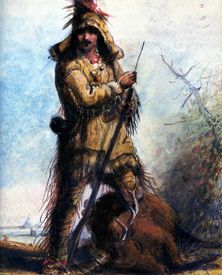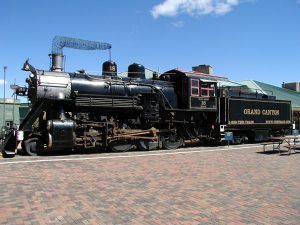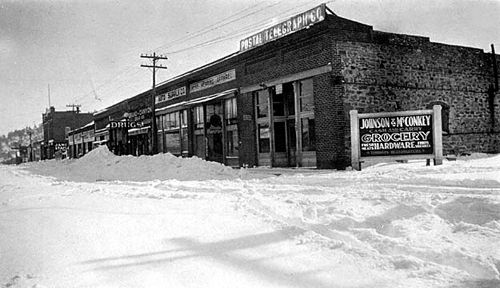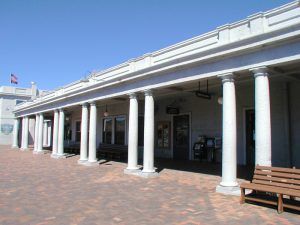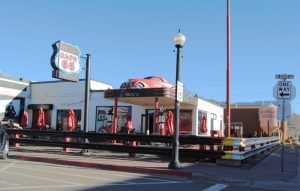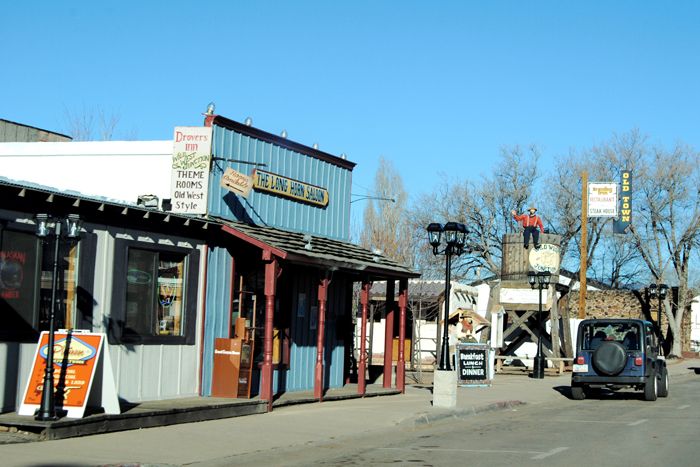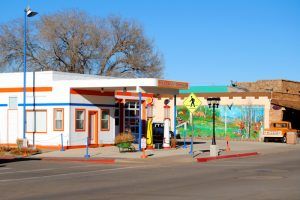On Route 66 in Coconino County west of Flagstaff, Williams, Arizona, is known as the “Gateway to the Grand Canyon.”
Like the rest of the vast West, Williams was first home to many Native American Tribes for thousands of years. Later Spanish explorers would first see the Grand Canyon while searching for the Seven Cities of Cibola in the mid-1500s. One can only imagine their amazement when stumbling upon that massive canyon after traveling hundreds of miles over nothing but desert sand.
In the early nineteenth century, mountain men began to push west in search of the plentiful game when the fur trade was at an all-time high. One of these men was William Sherley Williams. “Old Bill,” which he was most often called, wandered all over the western states as a trapper and a scout on the Santa Fe Trail. Soon, other men in search of gold began to roam the area. After the Civil War, land speculators, anticipating the construction of the westward-bound railroad, began to make claims on numerous areas in northern Arizona, including what would soon become Williams. Attracting sheep and cattle ranchers, the settlement was founded in 1876, taking the name of the famous mountain man, Bill Williams. In 1881 the first post office was established, and on September 1, 1882, the railroad finally arrived. In no time at all, Williams became the shipping center for the nearby ranching and lumber industries.
In the beginning, Williams, like so many other towns of the Old West, gained a reputation as a rough and rowdy settlement filled with saloons, brothels, gambling houses, and opium dens. Restricted by a town ordinance to Railroad Avenue’s “Saloon Row,” it didn’t stop the numerous cowboys, railroad men, and lumberjacks from frequenting these many businesses.
Even back in those days, early tourism began when people traveled to the Grand Canyon via buckboards and stagecoaches.
In 1901, the Santa Fe Railroad extended its line from Williams to the Grand Canyon, making the town the true “Gateway to the Grand Canyon.” It was also in this year that a devastating fire swept through town, taking with it some 36 businesses, including two hotels, plus ten homes in less than an hour. Within days, Williams began to rebuild and formed a new fire district.
Early in the 20th century, Williams also became home to one of the famous Harvey House Hotels. Called the Fray Marcos Hotel, the landmark still stands as a depot for the many passengers headed to the Grand Canyon.
In 1926, Route 66 was completed through Williams, which spurred several new businesses along the highway. It was this increased automobile traffic that would eventually shut down the rail service in Williams in 1968.
Ironically, the entire town would suffer the consequences of American’s need for speed when Williams became the very last Route 66 town to be bypassed by I-40 on October 13, 1984. Like other Route 66 towns, Williams suffered, but because of its proximity to the Grand Canyon, not nearly to the degree of many other small towns along the Mother Road. In the same year, Williams’ entire downtown business district was placed on the National Register of Historic Places.
A few short years later, on September 17, 1989, the Grand Canyon Railway was put back to work shuttling travelers from Williams to the Grand Canyon’s South Rim. Leaving the historic Fray Marcos Harvey House and Depot, the train now transports almost 200,000 visitors per year aboard vintage steam and diesel-powered trains. The Grand Canyon Railway provides a historic and fun journey to the canyon with the help of authentic western characters who bring the Old West to life. Be at the depot at 9:30 a.m. to catch Marshal Goodmore squaring off with the Cataract Creek Gang, a group of lowly desperadoes.
Route 66 is divided into east and westbound sections, so be sure to turn around and head in the other direction to get a peek at all that Williams has to offer. Along the way, check out Cruiser’s Cafe, which is housed in the old C. Bene Gas Station, the Turquoise Teepee, and Rod’s Steak House, a Mother Road icon since 1945.
Williams’ entire downtown area has been placed on the National Register of Historic Places, and several buildings along here deserve a stop. One interesting business is the Red Garter Bed & Bakery located at 137 Railroad Avenue. This century-old inn was once a popular saloon and bordello and reportedly now houses a ghost.
Outside of Williams, many outdoor activities prevail at four beautiful lakes within minutes of town – Cataract, Kaibab, Dogton, and White Horse Lakes, all of which provide fishing and camping.
Within an hour’s drive are Walnut Canyon and Wupatki National Monuments, sites of several 12th-century Indian ruins; Sunset Crater, the remains of a once-active volcano; and the San Francisco Peaks, the highest elevation in Arizona.
In season, the surrounding Kaibab National Forest provides hunting for deer, turkey, antelope, elk, lion, and bear. The Williams Ski Area provides downhill skiing and sledding during the winter months, and there are cross-country ski trails nearby.
After visiting the Old West and the Route 66 era, take a step way back in time as you stop at Flintstone’s Bedrock City, just some 30 miles north of Williams, on your way to the Grand Canyon. Here you can frolic with Fred, Wilma, Bam-bam, and the rest of the cast of the popular Flintstone characters at this wacky amusement stop.
To continue your journey on the Mother Road, you will rejoin I-40 just west of Williams at exit 161. The southern frontage road is Route 66 but soon dead ends.
Beyond here, there were once two old alignments traveling west, as those long-ago travelers dropped down from mountain country to the plains below. Both alignments can be accessed at exit 157 and run south of I-40. The more southerly pre-1932 alignment soon runs into private property. The post-1932 alignment can be driven but is mostly dirt or rugged pavement. The post-1932 alignment will take you by two old cafes – the Monte Carlo and the County Line, about a mile on down the road. Both these eateries are long closed.
More early alignments appear just a few more miles down the road, accessed at exits 151 and 149. Some of these are driveable, but others have been made into bike trails.
Continue your Mother Road journey by visiting nearby Ashfork and Seligman, a bit further down the stretch.
© Kathy Weiser-Alexander/Legends of America, updated November 2021.
Also See:
Red Garter Bed & Bakery Haunting
Frontier Era Time Capsule – Johnson Canyon Tunnel


